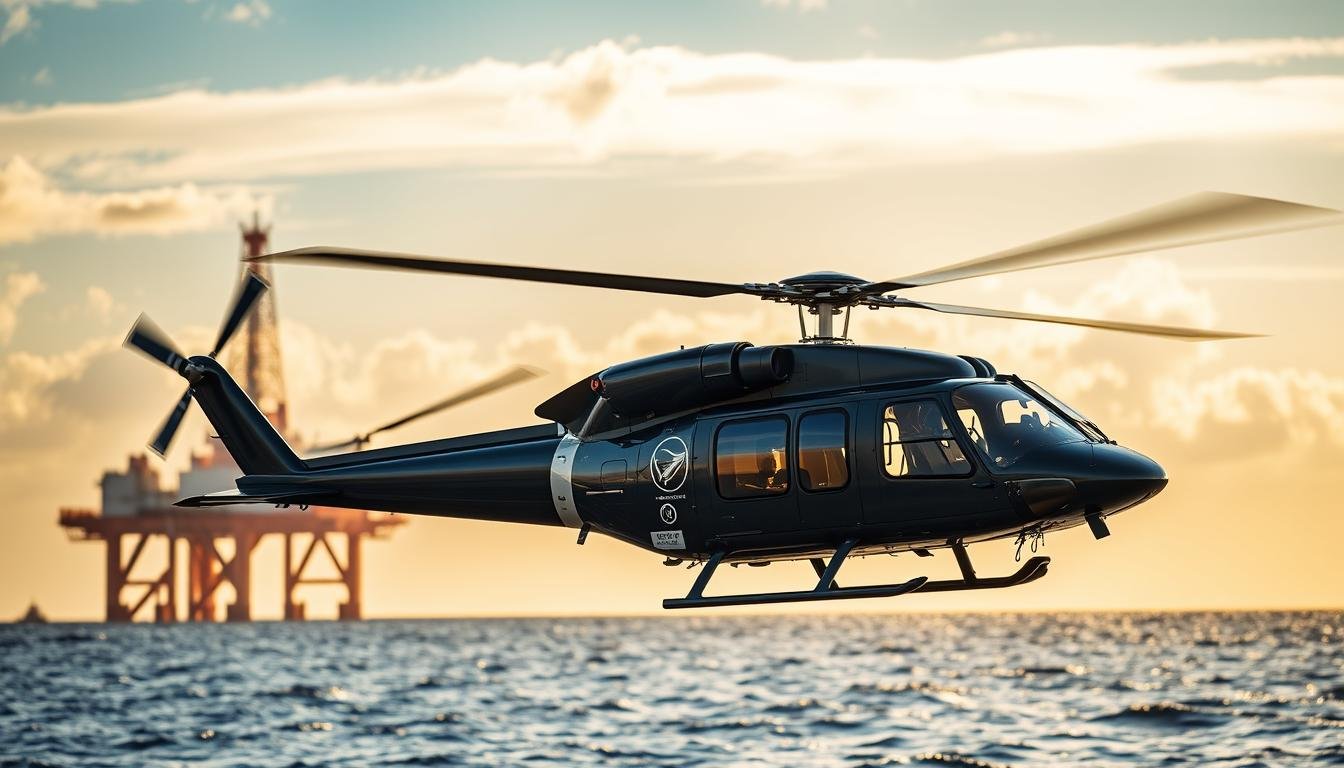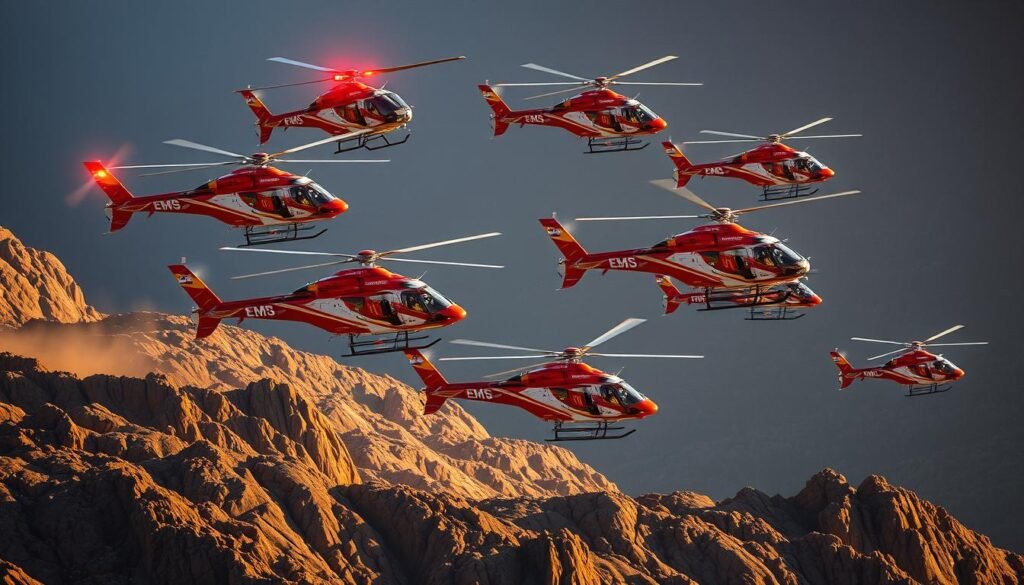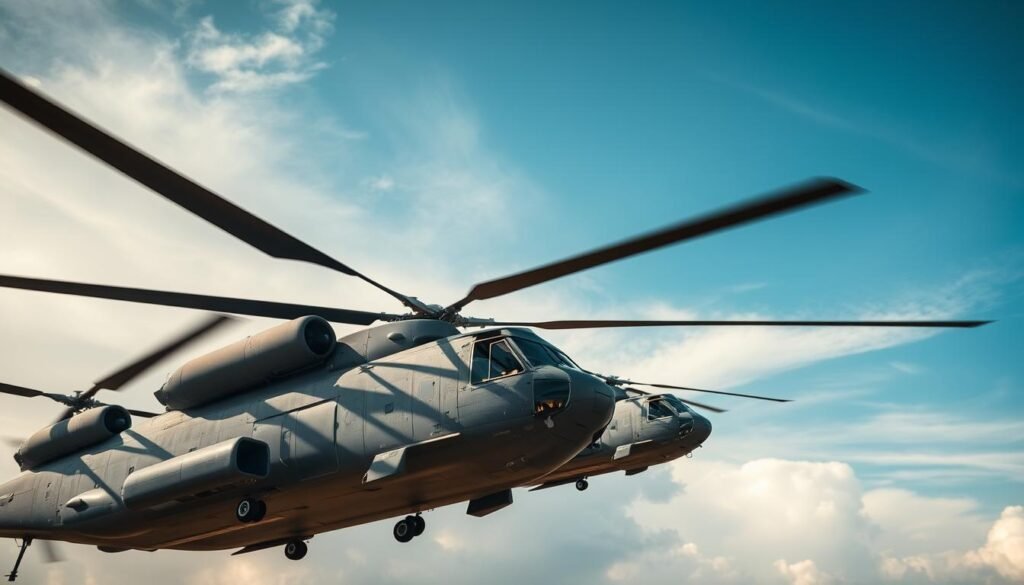Helicopter Transport Services once cut response times for offshore crews by more than half across the Minneapolis–Saint Paul region, reshaping how operators moved people and heavy gear.
They mobilized charters and fixed-wing aircraft to meet tight schedules and complex site needs. Saint Paul networks arranged crew rotations, aerial crane lifts, and long-line placements with exacting precision.
The team matched aircraft selection to payload, range, and weather before every mission. Clients relied on veteran pilots and disciplined ground crews to reduce downtime and uphold safety standards.
For heavy external load operations and verified aircraft liability, operators like Fair Lifts Helicopter Cargo Services provided rapid quotes and turnkey support, delivering a complete solution for urgent offshore and rooftop projects.
Key Takeaways
- Proven end-to-end logistics for offshore oil and gas personnel and equipment.
- Charter and aircraft choices were tailored to specific payload and weather factors.
- Aerial crane and long-line work minimized platform downtime with high precision.
- Saint Paul-based coordination offered fast deployment and a single point of contact.
- Clients gained measurable outcomes: reduced risk, faster timelines, and reliable support.
Helicopter Transport Services Overview And Value For U.S. Oil And Gas Logistics
Fast aerial deployment delivered measurable time savings for crew moves and emergency spares across Upper Midwest oil operations.
Fair Lifts supported Minneapolis heavy lift needs—HVAC installs, curb adapter replacement, transmission line construction, and emergency repair—using long-line external load operations to keep projects on schedule.
These aerial assets also added value during a high-profile event, providing aerial security and broadcast visuals for Super Bowl LII at U.S. Bank Stadium. That deployment showed readiness for tight timelines and complex site demands.
Helicopters Over Saint Paul arranged charters, aerial photography, and construction lifts with short-notice availability and free quotes. This coordination cut crew transfer times and helped mitigate weather or sea-state delays compared to surface options.
- Range and lift capability reduced on-site crane needs and avoided road closures.
- Utility and construction partners saw improved uptime for corridors, substations, and refinery tie‑ins.
- Quoting included predictable cost elements for crew, flight hours, and payload limits.
| Operational Need | Benefit | Predictable Cost Element |
|---|---|---|
| Remote pad-to-platform connections | Faster deliveries; fewer weather delays | Flight hours + payload surcharge |
| Emergency spares and repairs | Reduced downtime; rapid response | Standby rate + mobilization fee |
| Aerial security & broadcast for events | Enhanced situational awareness; media coverage | Hourly lift and crew costs |
For market context and forecasting tied to quoting and planning, see the market outlook.
Comprehensive Helicopter Services Tailored To Complex Projects
This team delivered tailored aerial capabilities for complex projects, matching aircraft and rigging to each mission. Planning focused on load envelopes, hook time, and permit sequencing so crews arrived ready and on schedule.

Heavy Lift Helicopters And Aerial Crane Lifting
Heavy lift and aerial crane lifting placed HVAC units, tower segments, and antennas into confined sites. Fair Lifts handled rooftop and transmission work with long-line expertise to avoid road closures.
Private Helicopter Charters And VIP Transport
Private helicopter charters moved executives and specialists on short notice. Charter coordination kept itineraries tight and minimized idle time between job legs.
Freight, Sensitive Materials, And External Load Operations
External load operations followed strict rigging and balance checks. Expert pilots and ground crews verified load plans and exclusion zones before any lift.
Utility And Construction Support: HVAC, Towers, And Pipelines
Utility and construction teams used aerial lifts for pole placement, pipeline stringing, and rooftop swaps where ground cranes were impractical.
Aerial Photography, Surveys, And Broadcast Support
Survey and broadcast work included LiDAR/IR mapping, live event aerials, and engineering surveys. The group configured aircraft and sling gear per equipment specs to align crews and permits.
| Subservice | Typical Use | Key Advantage |
|---|---|---|
| Heavy Lift & Crane | HVAC, antennas, tower segments | Reduced site disruption |
| Private Charters | Executive and technician moves | Rapid, short‑notice transfers |
| Survey & Broadcast | LiDAR, IR, live events | High-quality aerial data |
For project-level lift planning and quotes, see dedicated heavy-lift coordination at heavy-lift coordination, and for rental cost context consult guidance on rental costs.
Helicopter Transport Services For Offshore Oil And Gas
Offshore operations relied on rapid aerial rotations and precise lift planning to keep platforms stocked and crews on schedule. Minnesota operators listed heli‑portable drill work, pipeline inspections, and medevac transfers among their past capabilities.

Personnel Transfer, Crew Transport, And Shift Rotations
Personnel transfers followed fixed schedules with contingency slots. Crews ensured platform HSE standards were met and reduced standby time through tight manifests and verified briefings.
Equipment Lifting, Heli‑Portable Drills, And Rooftop Installations
Equipment lifts included heli‑portable drills, spares, and rigging packs. Each helicopter lift plan used weight-and-balance sheets, deck clearance checks, and post‑mission reporting to document risk controls.
Emergency Response, Disaster Relief, And Medical Transfers
Emergency procedures were validated for disaster mobilization and medevac moves. Fair Lifts’ network executed long-line external loads and rapid repair deployments when storms or outages threatened continuity.
“Each project documented exclusion zones, sling checks, and communications plans so stakeholders could audit safety and performance.”
- Marine dispatch and air traffic coordination synchronized handoffs.
- Construction inspection tasks along pipelines used crews already familiar with energy corridors.
- Saint Paul partners provided precision aerial crane pilots and charter coordination for the energy sector; see offshore oil and gas solutions for specialist planning: offshore oil and gas solutions.
| Capability | Typical Use | Key Control |
|---|---|---|
| Personnel Rotations | Crew swaps, shift rotations | HSE checks, manifest contingency |
| Equipment Lifts | Heli‑portable drills, spares | Weight & balance, deck clearance |
| Emergency Response | Medevac, rapid spares delivery | Validated procedures, rapid mobilization |
Safety, Precision, And Professional Operations
A disciplined safety culture made every external lift predictable and auditable across complex job sites. Teams used repeatable checklists and weather minima to remove guesswork during critical phases.

Precision in approach, hover, and load release was non‑negotiable. Rigging checks and sling validation finished before any pick.
Long‑Line Expertise, Load Control, And Strict Safety Protocols
Long‑line crews demonstrated steady load control in variable winds through practiced hook work and standardized briefings.
Briefings aligned every element with site HSE rules and client expectations. This reduced mobilization time and improved predictability for lifting tasks.
Experienced Pilots, Expert Ground Crews, And Reliable Aircraft
Veteran pilots and expert ground crews coordinated hand signals, radio calls, and exclusion zones so movements stayed synchronized without ambiguity.
Reliable aircraft were inspected mission‑by‑mission and retired from cycles when tolerances required maintenance.
“Repeatable checklists, agreed abort criteria, and post‑mission debriefs turned operational lessons into safer, faster outcomes.”
- Rigging & Load Control: validated configurations and release protocols for safe lifting.
- Operational Discipline: weather minima adherence and abort criteria agreed with clients.
- Continuous Improvement: incident‑free records and client feedback refined the solution set.
| Control Area | What It Ensures | Operational Benefit |
|---|---|---|
| Pre‑mission Inspection | Aircraft and rigging fit for purpose | Fewer stoppages; predictable pick cycles |
| Standardized Briefings | Clear roles, radios, hand signals | Aligned crews; reduced miscommunication |
| Client‑Agreed Criteria | Weather limits and abort rules | Transparent decisions; trusted outcomes |
For operational checklists and expanded crew training notes see an industry overview on helicopter operations. For pilot error prevention and best practices consult guidance for safer flying at pilot error prevention.
Service Areas, Rapid Deployment, And Transparent Quotes
Regional crews staged rapid deployments across the Twin Cities to meet industrial lift windows and event timelines. Coverage focused on Minneapolis-Saint Paul and surrounding areas so teams could reach sites fast.

Serving Minneapolis-Saint Paul And Wider Minnesota
Fair Lifts supported Saint Paul, Edina, Roseville, Shoreview and nearby cities with local staging yards and coordinated crews. Helicopters Over Saint Paul listed multiple Saint Paul ZIP codes covered to speed permit coordination and access.
Fast, No‑Obligation Quote And Project Planning Support
The process began with a rapid, no‑obligation quote. Call 1-800-318-8940 for Fair Lifts or 1-855-445-8965 for Helicopters Over Saint Paul to get indicative timelines and cost elements.
- Robust coverage: lift services matched industrial, commercial, and event needs across the metro areas.
- Rapid mobilization: a local team coordinated operators, yards, and aircraft so helicopter lift services met site windows.
- Transparent planning: quotes outlined mission parameters, permit lead times, and required gear to reduce surprises.
- Operational clarity: stakeholders received schedules and contact trees to avoid idle crews and delayed handoffs.
| What They Provide | Benefit | Typical Lead |
|---|---|---|
| Local Staging & Permits | Faster setup; less disruption | 24–72 hours |
| Fast Quote & Planning | Clear scope and cost drivers | Same‑day estimates |
| Event & Emergency Response | Rapid routing by range and payload | Mobilize within hours |
“Regional familiarity with Saint Paul access points shortened setup time and minimized disruption.”
Conclusion
Conclusion
Across Minneapolis–Saint Paul, teams proved they could mobilize fast, executing complex lifts, broadcast support, and emergency moves with repeatable precision.
The program integrated helicopters and aircraft with disciplined operations that protected schedule and safety. Charters and helicopter charters handled urgent crew changes and VIP transfers while meeting compliance and comfort standards.
Construction lifts, crane-assisted picks, and utility work benefited from tight ground-to-air coordination. Disaster readiness—storm recovery and medevac—was field‑tested and reliable.
Clients gained expert guidance and clear next steps: align scope, confirm equipment, schedule a site survey, and secure a firm quote at 1-800-318-8940 or 1-855-445-8965 to begin flight and ground preparations.
For regulatory guidance and crew training expectations, consult the safety code of practice.
FAQ
What types of offshore crew and equipment movement do you provide for oil and gas projects?
They provide crew transfer, shift rotations, and equipment movement tailored to offshore platforms and rigs. Services include personnel logistics, sling loads for tools and parts, heli‑portable drill transport, and rooftop or platform installations. Teams coordinate with operators to match flight schedules to crew rotations and project milestones while maintaining regulatory compliance.
Which aircraft and lift options are available for heavy or awkward loads?
The operator uses heavy‑lift rotorcraft and aerial crane capabilities for external loads, precision lifts, and long‑line operations. This includes certified long‑line specialists, load control equipment, and rigging to handle HVAC units, tower sections, pipeline components, and other oversized freight. They assess weight, center of gravity, and site constraints to select the correct aircraft and slinging method.
Can they support sensitive or hazardous cargo and how is safety managed?
Yes. They handle sensitive materials with specialized containment and secure cargo procedures. Hazardous items are transported under strict hazardous materials protocols, documented manifests, and industry safety standards. Pilots and ground crews follow checklists, site risk assessments, and redundant safety measures to minimize exposure and ensure secure delivery.
Do they offer VIP charters or executive transport for project managers and inspectors?
They provide private charters and VIP transport for executives, inspectors, and visiting engineers. Services include flexible scheduling, dedicated aircraft, and ground support to streamline transfers between airports, heliports, and remote work sites. Flights prioritize comfort, punctuality, and confidentiality for high‑level personnel.
How do they handle emergency response and medical transfers from offshore locations?
Emergency response includes rapid medevac capabilities and disaster relief support. Trained crews execute urgent extractions, deliver medical personnel and equipment, and coordinate with onshore hospitals and emergency services. Response plans emphasize speed, clear communication, and safe coordination with platform emergency teams.
What safety credentials and experience do the pilots and crews hold?
Pilots hold commercial rotorcraft certificates, instrument ratings where required, and type ratings for the specific aircraft used. Ground crews are trained in rigging, load control, and safety management systems. The operator maintains documented training programs, recurrent checks, and adherence to FAA and industry safety standards.
Which geographic areas and bases do they serve, including the Twin Cities?
They serve Minneapolis–Saint Paul and wider Minnesota, supporting projects across the Midwest and national deployments. The team offers rapid deployment from regional bases, coordinated logistics for remote sites, and partnerships with local heliports and airports to streamline operations.
How is project planning, costing, and quoting handled for complex lifts?
Project planning combines site surveys, lift studies, and equipment assessments to develop a clear scope. Quotes are transparent and itemize aircraft hours, crew, rigging, permits, and mobilization costs. They offer fast, no‑obligation estimates and work with clients to optimize schedules and reduce crane or ground equipment needs.
What limitations affect payloads, weather, and schedule reliability?
Payload limits depend on aircraft performance, altitude, temperature, and load configuration. Weather can restrict operations; wind, visibility, icing, and storms trigger conservative go/no‑go decisions. Schedules include contingency windows, and teams communicate real‑time updates to minimize downtime while preserving safety.
How do they integrate with construction, utility, and pipeline teams on site?
The operator coordinates closely with construction managers, utility contractors, and pipeline crews to align lifts with installation sequences. They supply lifting plans, on‑site riggers, and safety briefings so work crews understand load paths, exclusion zones, and timing. This integration reduces reliance on cranes and speeds project delivery.
Can they support aerial surveys, inspections, and broadcast or photography needs?
Yes. They provide aerial photography, LiDAR and survey platform support, and broadcast lifts with stabilized mounts and experienced camera crews. These services assist inspections, progress documentation, and media coverage while complying with flight permit requirements and airspace coordination.
What is the process to request a quote or book a charter?
Clients request a fast, no‑obligation quote by submitting project details: dates, locations, payloads, crew numbers, and any special requirements. The operations team performs a feasibility review, issues a transparent estimate, and outlines next steps for permits, insurance, and site prep to finalize scheduling.
Related Articles
- Medical Transport Helicopters: Critical Features and Models for Emergency Flights
- Helicopter Drones: The Future of Unmanned Aerial Systems
- Helicopters for Offshore Oil and Gas Operations: Transporting Workers and Equipment
- Helicopters in Tourism: The Best Models for Scenic Tours
- Helicopters for Police and Law Enforcement: Surveillance and Patrol Capabilities
More from This Category
- The Evolution of Attack Helicopters: Key Models and Their Capabilities
- Utility Helicopters: The Workhorses of the Sky
- Trainer Helicopters: The Best Models for Learning to Fly
- Helicopters for Aerial Photography and Filmmaking: Top Picks for Capturing the Perfect Shot
- Luxury Helicopters: The Best Models for Private and Corporate Use
- Heavy Lift Helicopters: Moving Large Cargo and Equipment
- Agricultural Helicopters: Aerial Spraying and Crop Management
- Rescue and EMS Helicopters: How They Save Lives in Critical Situations
- Military Helicopters: Key Models and Their Combat Roles
- The Different Types of Helicopters: From Light Utility to Heavy Lift



